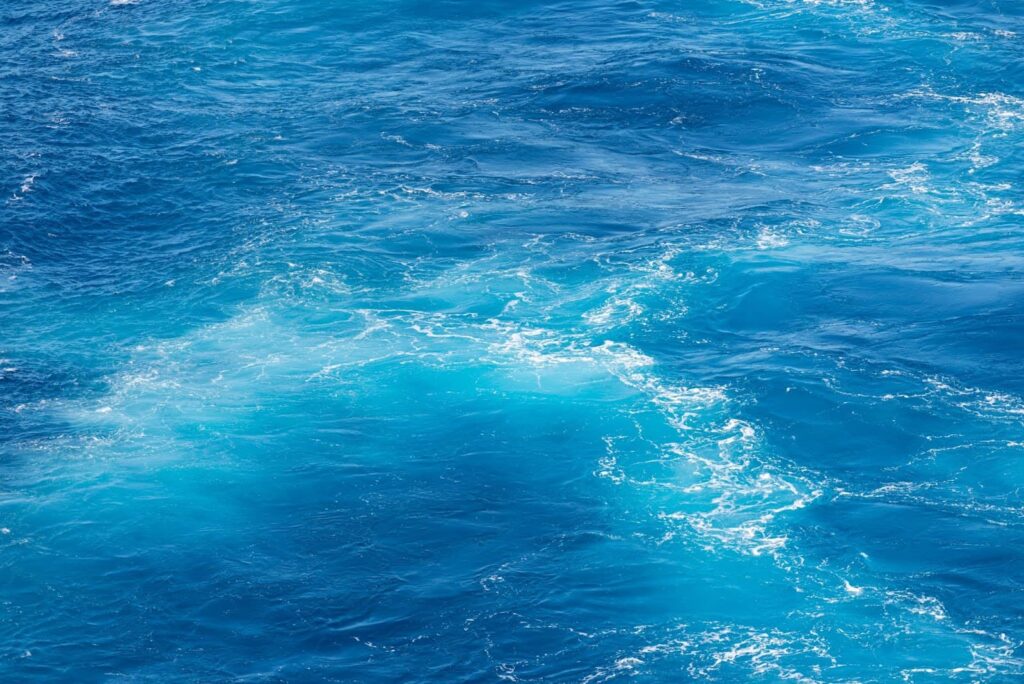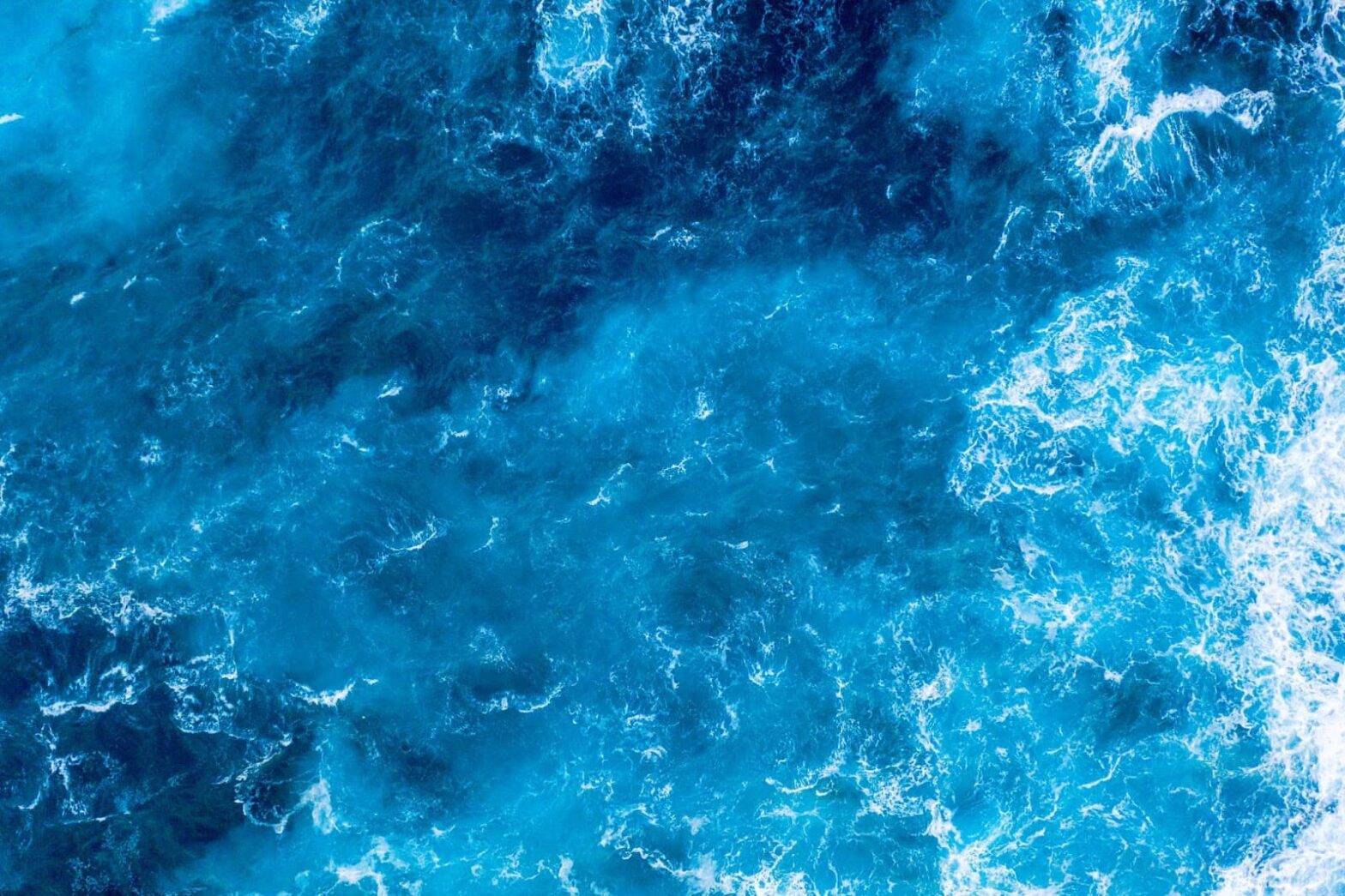The ocean evokes numerous sensations, from the tang of salt in the air to the rhythmic melody of waves colliding, all amidst an ambiance of tranquility. Yet, above all, it is the profound connection with the color blue that encapsulates its essence. Throughout history, humanity has pondered the origins of this vast expanse’s hues. Does its azure tint merely result from mirroring the heavens above, or does its significance delve into deeper realms of understanding?
The Science Behind Ocean’s Blue: Decoding Light Reflection on Ocean Surface
Often, we’ve heard people suggesting that the ocean appears blue because it simply mirrors the color of the sky. While there is a certain truth in this statement, it’s just a fraction of the actual answer to why the ocean looks blue.
A Symphony of Colors: How Oceans Reflect the Sky
When standing by the coast, one can easily observe the ocean’s color seeming to alter based on the sky’s complexion. On cloudy, overcast days, the sea may adopt a grayish shade; during sunrises and sunsets, it often transforms into a beautiful canvas, painting hues of orange, pink, and purple as it reflects the bright, colored sky.
This reflection phenomenon, however, is restricted to the ocean’s surface. So, while it does have some bearing, the mirror-like display doesn’t explain the blue color that prevails even in deep waters far from the reach of direct sunlight.
- Surface reflection: It’s the phenomenon where the ocean reflects the sky’s color; however, this is confined to the surface level only;
- Deepwater color: Despite the surface reflections, the ocean maintains its blue color in its depths, well beyond the reach of direct sunlight.
This apparent discrepancy raises an interesting question: if sky reflection isn’t the primary reason, then why does the ocean appear blue, especially in its depths? To answer this, we need to delve deeper into the science of light and its interaction with water.
Unmasking the Optical Illusion: Water’s Relationship with Light
Water has an interesting relationship with light. To understand why the ocean appears blue, we need to grasp how water molecules absorb light and the role wavelengths play in this interaction. Here’s a detailed exploration:
Light Absorption: The Magic ‘Blue’ Filter
Water is an efficient light absorber, but it doesn’t treat all colors equally. Essentially, water behaves like a magical filter, gradually soaking up every color in the spectrum except for blue. Thus, blue becomes the prevailing color, thrown back into our line of vision.
Sunlight: A Kaleidoscope of Colors
Sunlight isn’t exactly white. It’s a medley of all visible light spectrum colors, ranging from red to violet. Each color has a distinct wavelength, which governs its behavior once it meets water.
- Long-wavelength colors: Colors on the red end of the spectrum possess longer wavelengths—with red light having the longest. These colors are soaked up by the water most quickly;
- Short-wavelength colors: Conversely, the blue end of the spectrum, including violet, has shorter wavelengths, translating into more energy. These color lights can penetrate deeper into the water. Although violet light has the shortest wavelength, blue color gets absorbed the least by water.
While the ocean absorbs colors like red, orange, yellow, violet, and even green at different rates, it scatters blues (and sometimes greens) back, making them the only colors our eyes perceive.
The Underwater Blues: Deep Dive into Color Perception
One fascinating consequence of this light interaction is the blue tint that bathes everything underwater. Near the surface, we can still identify all colors, but the deeper we dive, certain colors start to fade.
- An object’s color gradually changes with depth. For instance, a red swimsuit 30 meters underwater appears black, as all red hues have been absorbed by the water;
- Always remember that the deeper you go, the more the red, orange, and yellow hues disappear, leaving behind different shades of blue and green.
Understanding this color-changing phenomenon underwater can not only enrich your scuba diving experience but also serve as a practical guide for underwater photographers to capture the true essence of the deep blue sea.
Influences on Ocean Color: Beyond Just Blue
While we’ve established why the ocean is primarily blue, we also observe a riot of other colors, from azure and turquoise to even brown. Wondering what brings about these color variations in different regions? Let’s dive into the elements influencing ocean color.
Algae’s Green Palette: The Role of Phytoplankton
Contrary to popular belief, it’s not just light and water influencing the ocean’s color. Tiny, often overlooked organisms, phytoplankton, play a significant role in determining the sea’s color palette. Here’s how:
- Photosynthesis Powerhouses: Phytoplankton are microscopic algae that contain chlorophyll—a green pigment used for photosynthesis. These minuscule organisms are essentially the Earth’s lungs, producing about half of its oxygen;
- Color Enhancers: Being rich in chlorophyll, phytoplankton absorbs red and blue light while reflecting green. Thus, water with a high quantity of phytoplankton will adopt green shades rather than blue;
- Determining Hue: The exact hue of green seen in a water body doesn’t only depend on the quantity of algae present. It’s also influenced by the specific type of phytoplankton blooming in the area. For instance, some algae blooms (commonly known as red tides) can turn the ocean red.
Monitoring phytoplankton blooms not only helps scientists understand their impact on the marine ecosystem but also provides valuable insights into broader environmental changes.
Sediment Stir-Up: Muddying the Ocean’s Blue
Stirred-up sand, silt, and other marine sediments have a role to play in the ocean’s color spectrum as well:

- Creating the Murky Effect: When waves and storms stir up sand and silt or rivers bring in runoffs, these sediments increase the reflection of light. The light rays bouncing off them can turn the sea into a murky brown;
- Influence of Marine Debris: Floating marine debris also contributes to this effect, making some parts of the ocean appear cloudier and less transparent.
Understanding these multiple factors and their interplay helps us appreciate the larger picture of the rich colors displayed by our oceans—a kaleidoscope of colors born out of physics, biology, and geology.
The Influence of Depth and Seafloor on Ocean Colors
The ocean plays with light and color in an astonishingly diverse way. This interplay of illumination and depth brings us a myriad of ocean hues. Here’s how:
Depth Perception: Variations of Ocean Blues
Ocean depth significantly impacts the color visible from the surface. More specifically, the concentration of water molecules in a given area can dictate the light’s journey, thereby affecting the color we perceive.
- Shallow Waters: In shallow areas, where water molecules are fewer, light can penetrate more deeply, illuminating the seabed. The lack of abundant water molecules absorbing and reflecting light results in clearer waters, allowing us to see through to the bottom;
- Deep Waters: As the water gets deeper, the greater concentration of water molecules absorbs and scatters light more intensely. In addition, at such depths, the ocean floor lies beyond the reach of light, eliminating the impact of seabed reflections on ocean color. Consequently, these areas usually appear in rich navy blue shades.
However, remember that beyond 1,000 meters (approximately 3,280 feet), the ocean descends into darkness as no light can penetrate this far down.
Reflections from the Seabed: Lending Colors to the Shallows
Where the ocean is not very deep, the seafloor significantly contributes to the color. The composition and color of the seabed, whether it’s sandy, rocky, or full of marine plants, can reflect light in various ways, imparting different hues to the water.
- White Sandy Bottoms: If the seafloor comprises white sand, it can reflect light to create enchanting turquoise or light blue water. This reflection is the reason behind the alluring colors of many tropical beach destinations;
- Seabed Vegetation: In areas with abundant marine plants or seaweed, the water could appear green due to the reflection of light from the green vegetation.
Whether it’s swimming in a turquoise lagoon with a white sandy bottom or exploring the dark depths of a navy blue sea, understanding how depth and the seafloor influence ocean color enriches our experiences with these breathtaking bodies of water.
Conclusion
In conclusion, while the ocean conjures myriad sensory experiences and emotions, its association with the color blue stands as a symbol of its inherent beauty and mystery. Whether reflecting the sky or holding deeper secrets within its depths, the allure of the ocean’s hue continues to captivate and inspire curiosity, reminding us of the boundless wonders that lie beneath its surface.



